Lucerne is the kind of place that looks like it was pulled straight from a storybook; nestled between snowcapped peaks and the shimmering waters of Lake Lucerne. With its charming Old Town, historic wooden bridges, and picture-perfect waterfront, it’s a city that invites you to slow down and soak it all in. But as we quickly discovered, timing can dramatically shape your experience.
The Same
Whether you’re seeking outdoor adventures in the Swiss Alps, exploring historic cities and cultural landmarks, or simply relaxing amidst stunning natural scenery, Switzerland offers something for every traveler to enjoy. So much so that there was only one place that overlapped between the Family and The Dinks.
- Old Town (Altstadt)
Get lost in the storybook streets of Lucerne’s Altstadt, where every corner reveals painted facades, cobblestone lanes, and a strong sense of preserved history. Wander through vibrant squares like Weinmarkt, Kornmarkt, and Hirschenplatz, each offering a different flavor of Lucerne’s past — from guild houses to charming fountains. It’s the perfect area for a leisurely walk, boutique shopping, or grabbing a coffee with a side of centuries-old ambiance. - Chapel Bridge (Kapellbrücke) & Water Tower
Stroll across Lucerne’s most iconic structure, the Chapel Bridge, a beautifully preserved 14th-century wooden bridge that stretches diagonally across the Reuss River. Inside the bridge, take time to admire the series of historic triangular paintings under the eaves, which illustrate key moments from Swiss history and mythology. At one end stands the striking Water Tower, once used as a prison, torture chamber, and later as a treasury. This duo of landmarks perfectly captures Lucerne’s blend of medieval charm and cultural depth. - Lion Monument (Löwendenkmal)
Visit the emotionally moving Lion Monument, one of Lucerne’s most famous and symbolic landmarks. This massive sculpture, carved directly into a sandstone cliff, honors the bravery of the Swiss Guards who were killed during the storming of the Tuileries in 1792. The dying lion, pierced by a spear, conveys a deep sense of sorrow and sacrifice, and Mark Twain once called it “the most mournful and moving piece of stone in the world.” It’s a must-see moment of reflection. - Musegg Wall & Clock Tower (Zyt Tower)
Step back in time with a walk along the Musegg Wall, part of Lucerne’s original 14th-century city fortifications. Several towers remain intact and open to visitors during warmer months. Don’t miss the Zyt Tower, which features the city’s oldest functioning clock (installed in 1535) and has the unique privilege of chiming the hour one minute before all the other clocks in town. Climbing the wall offers panoramic views of Lucerne’s rooftops, the lake, and surrounding mountains, a rewarding mix of history and scenery. - Lake Lucerne Cruises
While we didn’t have the time for a cruise on Lake Lucerne (having already enjoyed one on Lake Zurich), this experience comes highly recommended. If your schedule allows, hop aboard one of the elegant paddle steamers or modern boats and enjoy a scenic journey across crystal-clear waters. With the majestic Alps rising on all sides and charming lakeside villages dotting the shoreline, it’s one of the most relaxing ways to take in the natural beauty of central Switzerland.
The DINKs
We visited in the shoulder months, avoiding both the summer rush and major festivals. While there were still tourists (Lucerne is no secret), the pace was calm, the views unobstructed, and the entire city felt more serene.
We spent hours wandering through the Old Town, popping into bakeries and admiring squares like Hirschenplatz, each corner offering a postcard-worthy backdrop. The Chapel Bridge, without the crowds, felt like a quiet invitation to step back in time. We even had time to visit the Lion Monument (Löwendenkmal) a hauntingly beautiful sculpture of a dying lion carved into sandstone, commemorating Swiss Guards who died during the French Revolution. It’s one of those rare spots that humbles you instantly.
A real highlight was climbing the Musegg Wall, a stretch of Lucerne’s medieval city walls still intact. We took our time exploring the towers, especially the Clock Tower (Zytglogge), home to the city’s oldest clock, which still chimes with remarkable precision.
The Family
Traveling as a family, we were excited to spend the day in Lucerne and had high hopes of lakeside strolls and leisurely exploring the Old Town. But as luck would have it, our visit coincided with a large local festival. The narrow cobbled streets, usually charming and walkable, were packed shoulder to shoulder with people, and the festive atmosphere was overwhelming for little ones.
We managed to squeeze in a short visit to the Chapel Bridge (Kapellbrücke), Lucerne’s most iconic landmark. This covered wooden bridge, dating back to the 14th century, is lined with paintings depicting key moments from Swiss history and mythology. At the far end, the imposing Water Tower once functioned as a prison, torture chamber, and treasury. The kids were fascinated by the idea (though maybe not the “torture” part), but the crowds made it hard to linger.
We strolled briefly through the Old Town (Altstadt), marveling at the colorful frescoes on medieval buildings and snapping a few quick photos at Weinmarkt and Kornmarkt, but ultimately, we left before lunch. Between the tight crowds and overstimulating noise, it was just too much for a family morning.
Summary
Whether you visit Lucerne during a peaceful off-season getaway or amid the hustle of festival time, its beauty is undeniable. But if you’re traveling with kids (or just prefer a more relaxed pace), consider avoiding major events. Lucerne’s charm truly shines when you have the space and time to slow down and savor it; whether that means holding hands on a quiet bridge or chasing little ones through cobbled alleys.
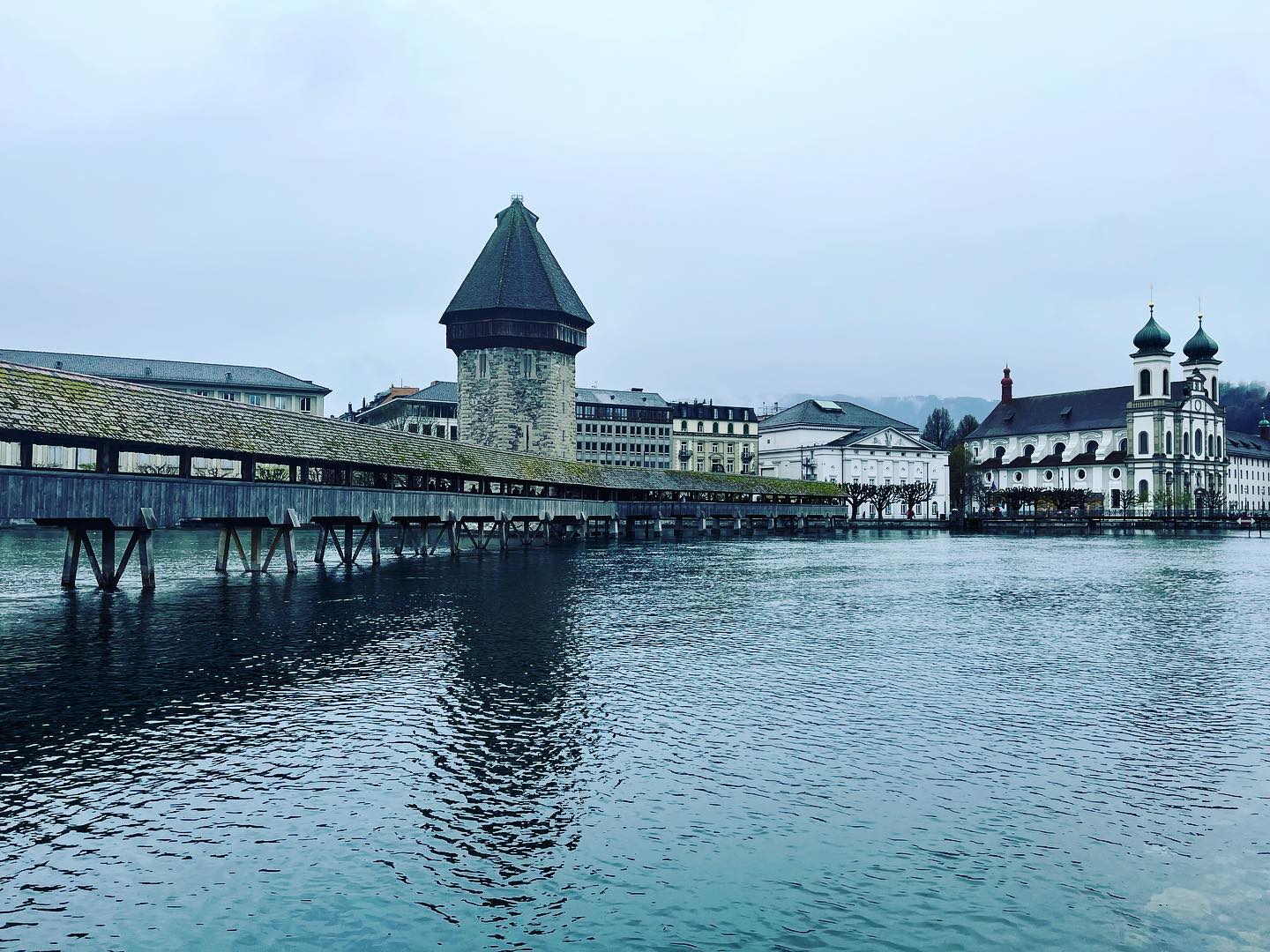
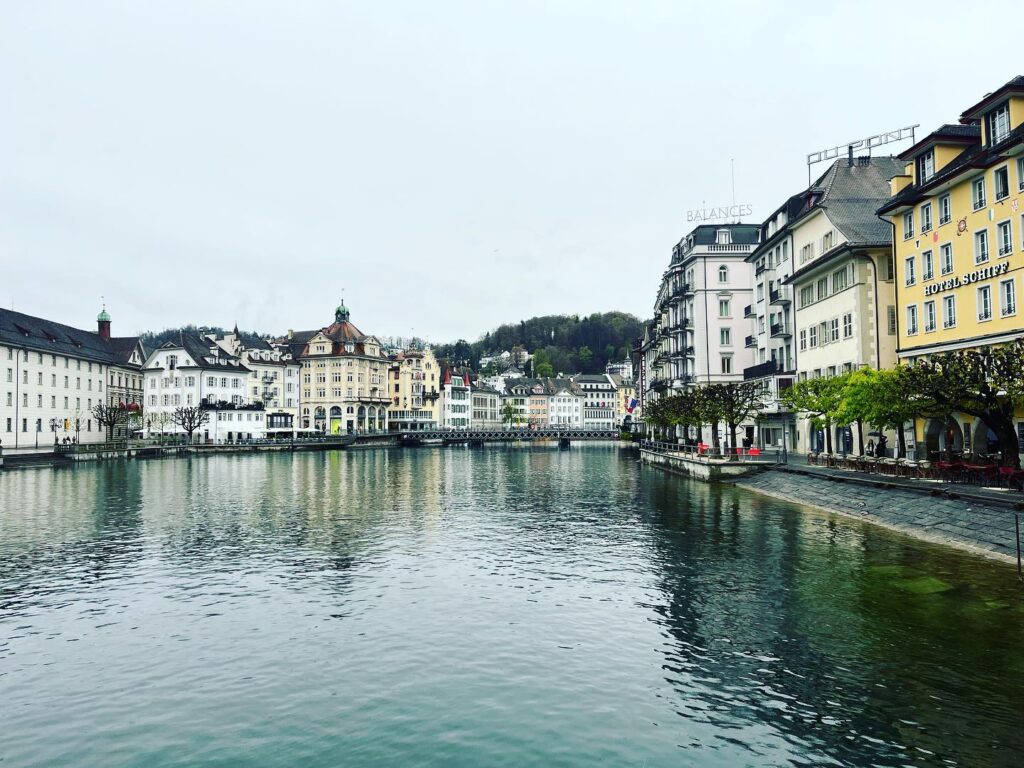

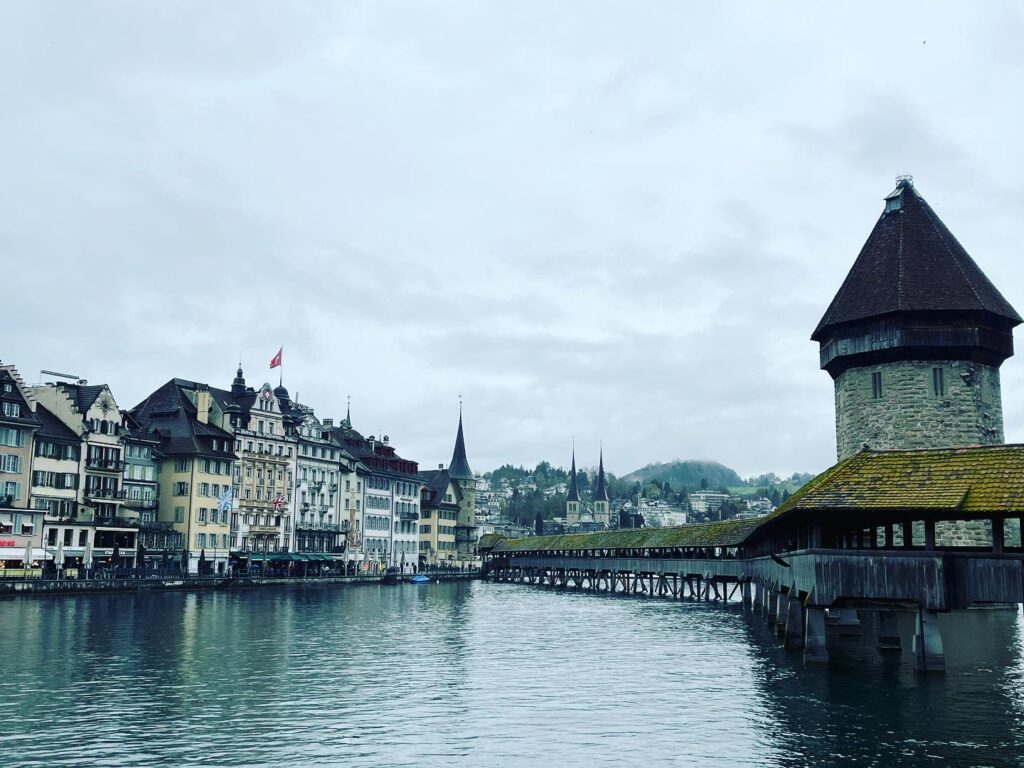
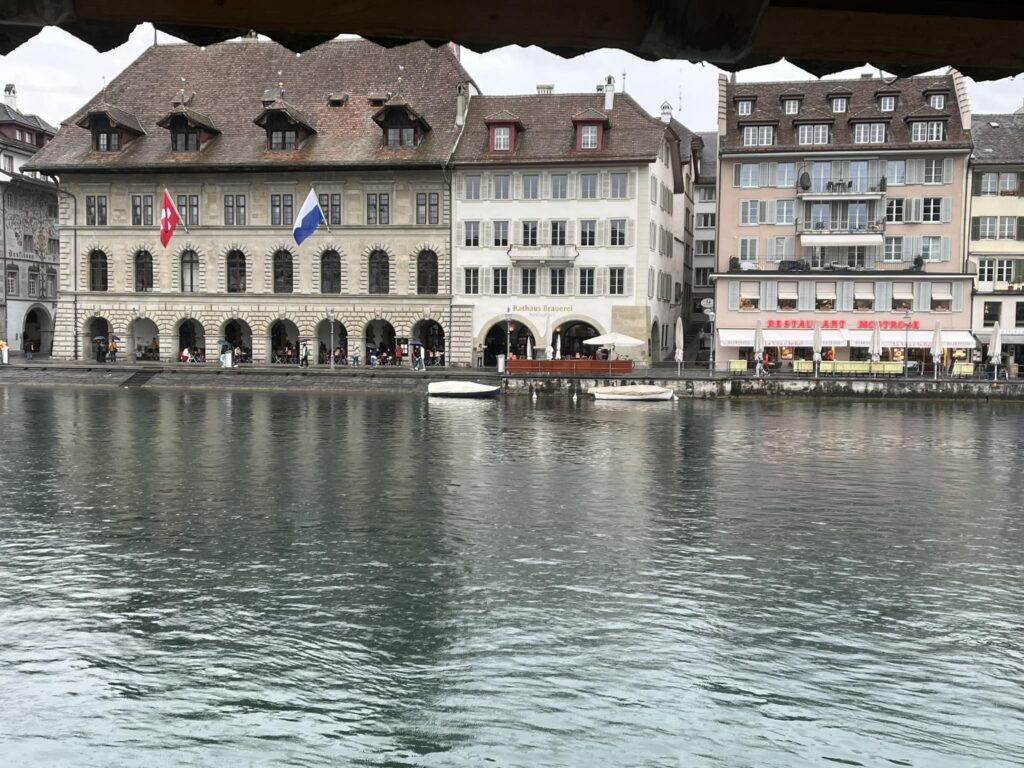
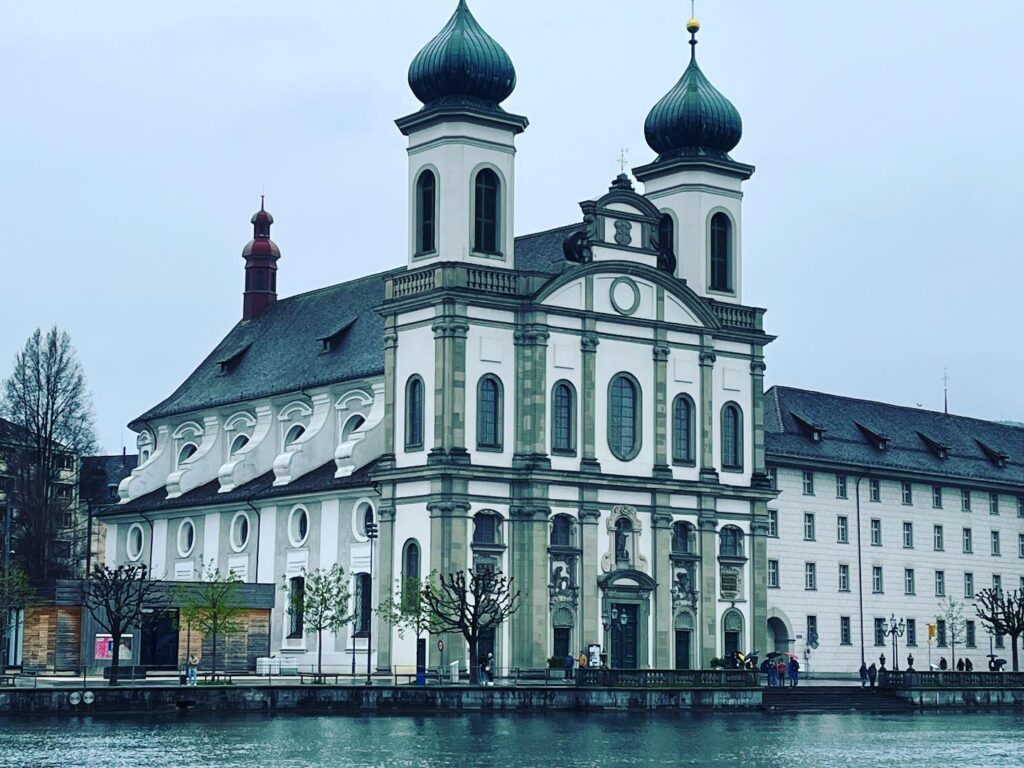
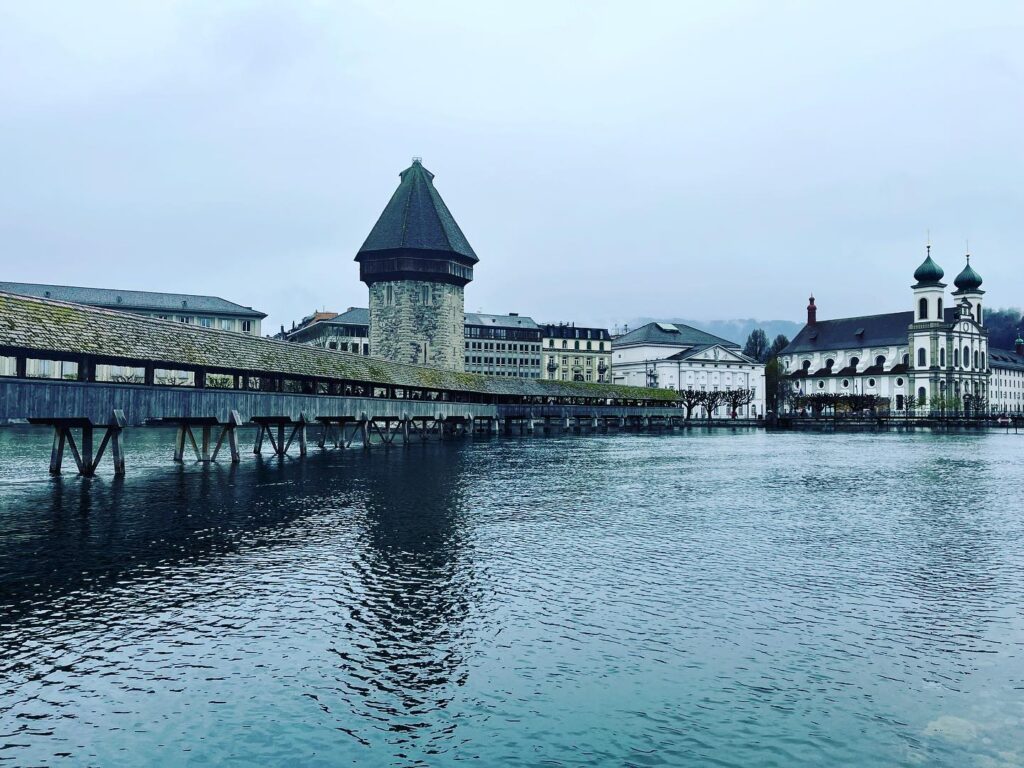
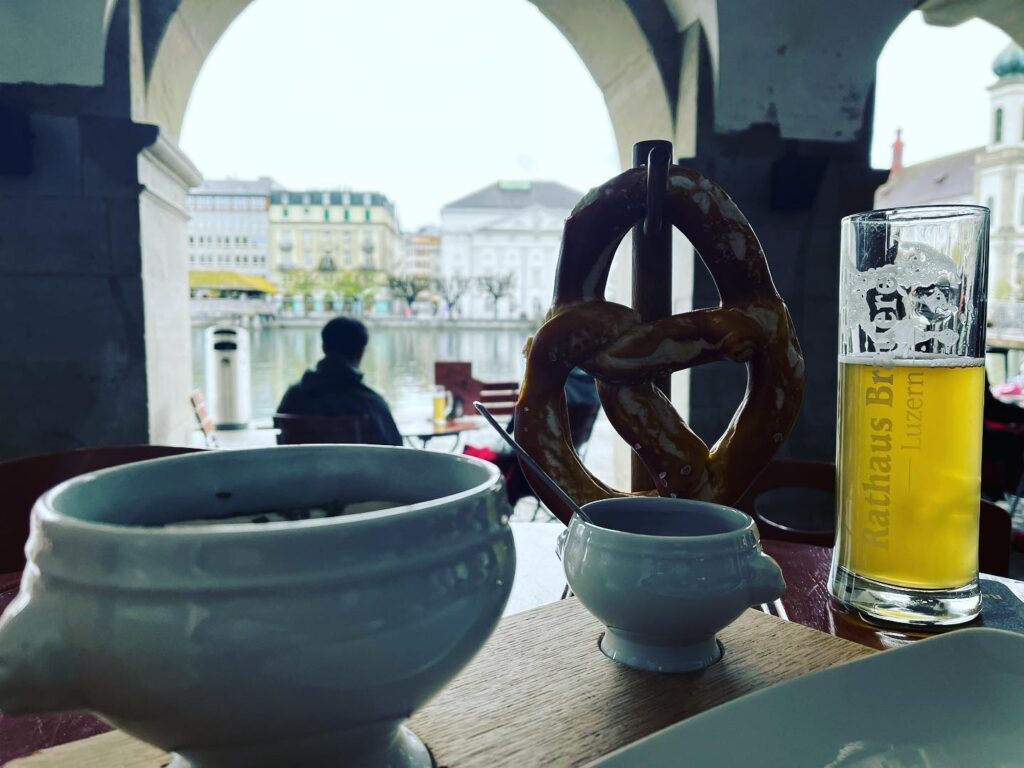



Leave a Reply